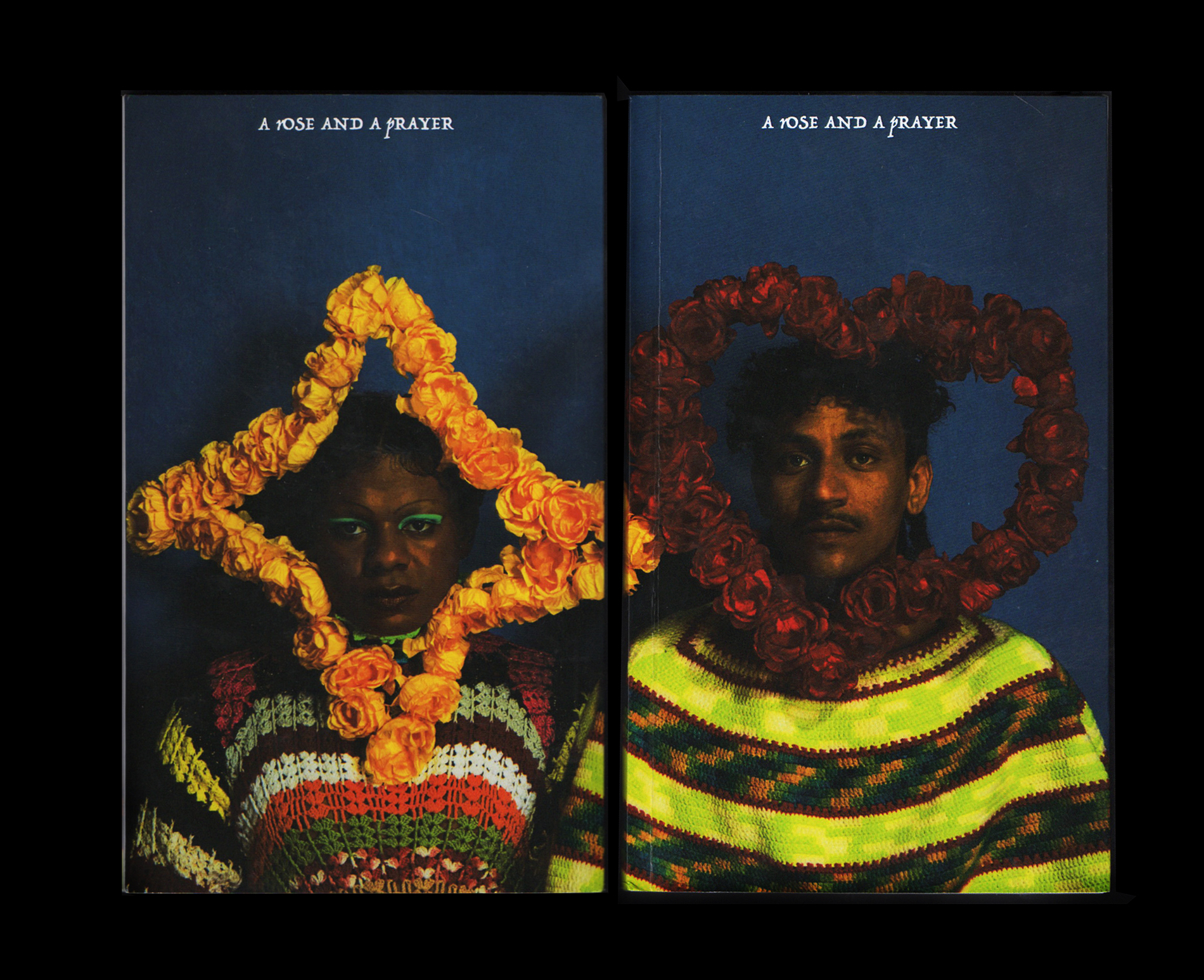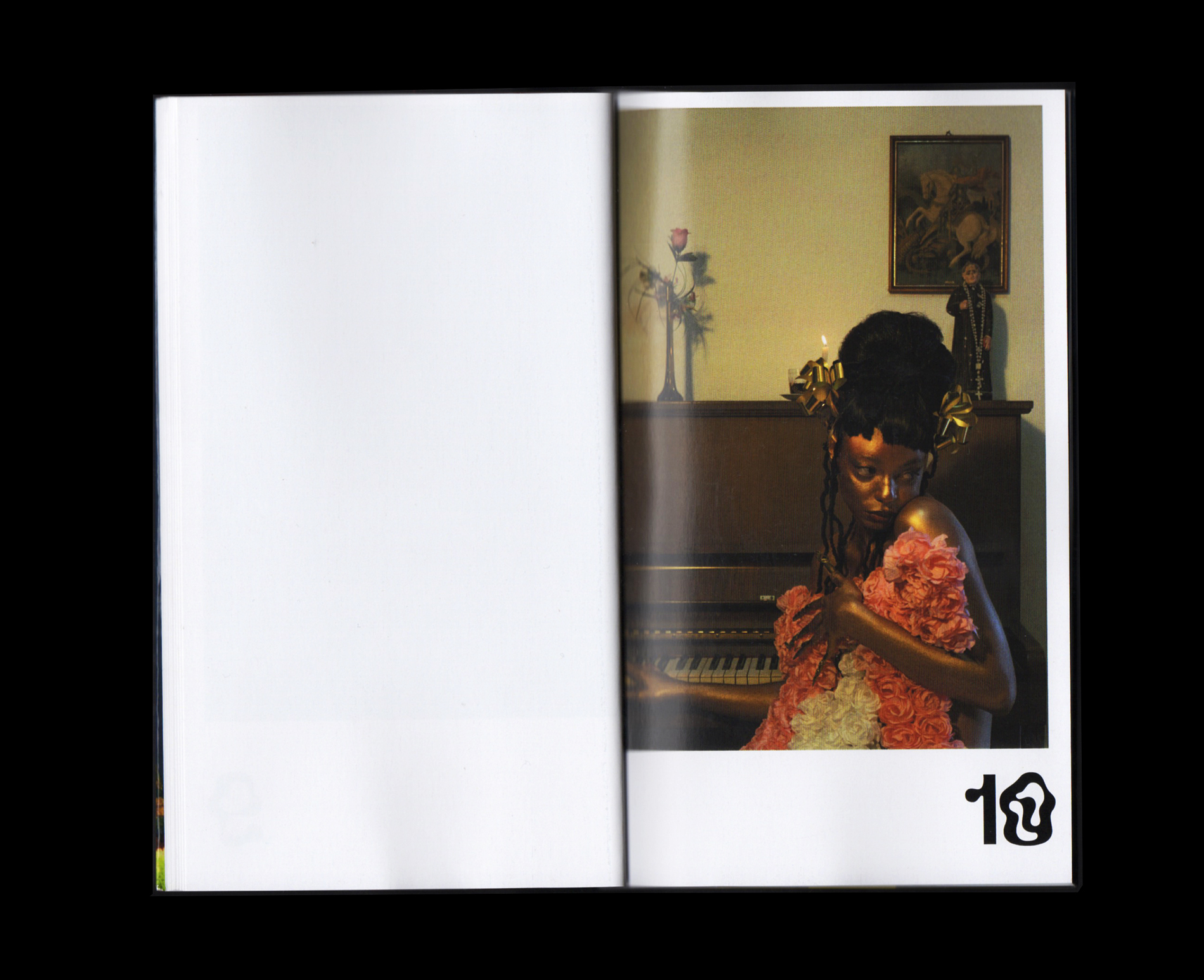
The first photobook by Ode, a multidisciplinary Brazilian artist working in the realms of directing, styling, writing, and curating is composed by two photoshoots in Cidade Martins neighborhood and Favela do Coqueiro in Guarulhos (São Paulo, Brazil), this series is a study of Brazilian iconographies that challenge Western perceptions, which generally ignore the Global South as part of Latin American life. Ode is constantly researching signs that connect Brazil, a Latin American country of the Global South, with other Latin American countries of the Global North. Through this research, an important topic that has emerged for her is religion and sacred symbols, which feature prominently in her work.The artist also invited various friends to be part of the shoot and wear her pieces made from paper roses bought in a R$1.99 store, including her best friend, the singer, writer, filmmaker and visual artist Novíssimo Edgar, the actor Lucas Leto, Alanda Monteiro, a beautician she met in her hometown, and the renowned Brazilian singer Urias.
Commissioned by COLORSxSTUDIOS, A Rose and A Prayer was photographed by Cássia Tabatini and Gabriel Cupaiolo. The book accompanied a text written by British writer and curator Cairo Clarke.
O primeiro fotolivro de Ode, artista brasileira multidisciplinar que trabalha nos domínios da direção, styling, escrita e curadoria. Composto por duas sessões fotográficas no bairro Cidade Martins e Favela do Coqueiro em Guarulhos-SP, esta série é um estudo de iconografias brasileiras que desafiam as percepções ocidentais, que geralmente ignoram o Sul Global como parte da vida latino-americana. Ode está constantemente pesquisando sinais que conectam o Brasil, um país latino-americano do Sul Global, com outros países latino-americanos do Norte Global. Através desta pesquisa, um tópico importante que surgiu para ela é a religião e os símbolos sagrados, que se destacam em seu trabalho. A artista também convidou vários amigos para fazer parte da filmagem e usar suas peças feitas de rosas de papel compradas em uma loja de R$ 1,99, incluindo seu melhor amigo, o cantor, escritor, cineasta e artista plástico Novíssimo Edgar, o ator Lucas Leto, a renomada cantora brasileira Urias e Alanda Monteiro, uma esteticista que conheceu em sua cidade natal.
Comissionado pela COLORSxSTUDIOS no ano passado, A Rose and A Prayer foi fotografado por Cássia Tabatini e Gabriel Cupaiolo. O livro acompanha um texto escrito pela escritora e curadora britânica Cairo Clarke.


